Specialist back pain treatment at our London clinic
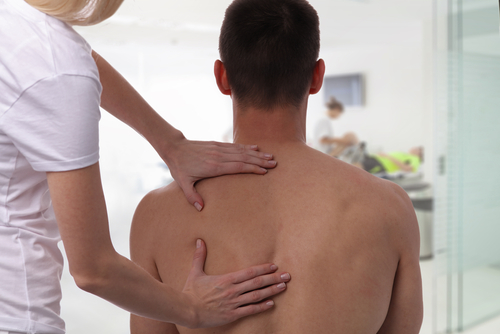
Lower back pain is extremely common, with 80% of people experiencing it at some time during their lives. Lower back pain can range from a slight twinge or soreness through to extreme pain with sensations of locking and spasm. Fortunately, despite the distress that lower back pain causes, it is rarely due to serious injury or underlying conditions.
Only 1 – 2% of back pain is from serious problems and you should generally continue activity as much as possible and expect it to get better. The natural history of lower back pain is very good with most people making a good recovery with time, gentle movement and maintenance of / or return to normal movements and activity. It is also worth noting that the level of pain is not indicative of the seriousness of the condition. In fact many of the most severe cases of lower back pain are from muscle spasm, which resolves with relaxation and movement (sometimes easier said than done).
Reoccurrence is common in lower back pain, and for some people pain can become persistent. Lower back pain is the leading cause of disability in the world, however it does not have to be this way; with good advice and treatment the vast majority of people can reduce or stop these symptoms effectively, and live full active lives.
Research has shown that changes on scans, such as degenerative changes, arthritis, and disc bulges, are poorly linked to pain and that these changes are very common in pain free populations. Therefore, findings on scans can be misleading, and sometimes lead to worse treatment and outcomes for patients. For more information on this you can read our blog post where we go into this subject in more detail here
There are cases where imaging of the lower back is useful and appropriate. Your osteopath will be able to discuss and advise you based on a detailed examination and case history, to make sure that you get the best and most appropriate treatment, and can refer you for scans if needed.
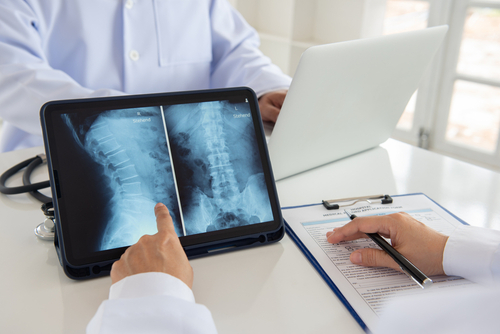
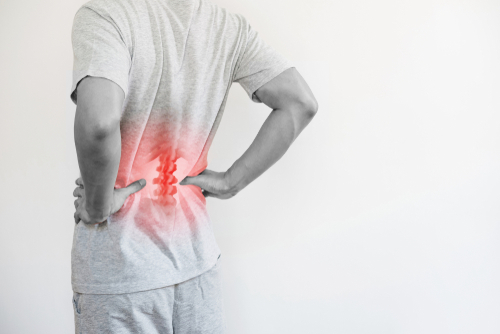
Lower back pain is as unique as the person experiencing it; however, it can be useful to break it up broadly into four main types. These can be considered as:
– Serious / pathological back pain
– Acute / short term back pain
– Persistent / long term back pain
– Pain flare-ups
Most lower back pain is not from serious causes, even in cases of extreme pain. There are however some rare cases where further medical attention or investigation is necessary, and the main examples of these are listed below:
If you have been in a traumatic incident such as falling off of a ladder or a car accident then you should get an X-ray.
If you are over 50, have a previous history of cancer and have developed back pain for no apparent reason that is not settling you should have a check up with your GP.
If you experience weakness in both legs and/ or difficulty going to the toilet, go to local Accident and Emergency department
If you are not sure whether you need to seek medical attention, then you can arrange a free 15-minute phone consultation to discuss your problem.
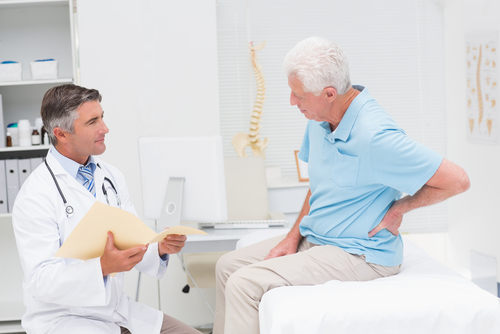
We offer specialist treatment for back pain at our clinic in Holland Park, easily accessible from Notting Hill, Shepherd’s Bush, Ladbroke Grove and surrounding areas.
Booking is quick and simple using the booking system below. For very short notice appointments, you can also try us on 07958070680.

Acute/short-term pain often occurs in response to sudden movements or unaccustomed activity which trigger a pain response in the body. These incidents may or may not involve tissue damage; such as a strained muscle or a sprained joint or disc. Whilst it is natural to think that damage has been done when such pain is being experienced, in many cases the body creates the muscle spasm and pain as a protective function before any damage has occurred. In cases where some tissue damage has occurred the body’s natural healing process are able to effectively repair and adapt to make full recovery when given the appropriate time and movement to do so.
With acute / short-term lower back pain the initial treatment priorities are pain reduction and facilitating your bodies natural healing and repair processes. Hands on techniques can be used to improve circulation through transporting nutrients to and removing waste product from the healing tissues. This facilitates and maximizes the healing response, whilst at the same time providing pain reduction through the removal of waste products, which can build up and irritate nerve endings.
To further aid pain reduction, hands on techniques and acupuncture can be used to reduce pain sensitivity through interactions with the nervous system and through the release of pain inhibiting molecules.
As pain and inflammation subsides and the body goes through its natural healing processes, the focus of treatment shifts onto improving range of movement and facilitating the later stages of the healing process. Specific movement and exercises work to restore range of movement at local tissues and the body as a whole.
During pain episodes, changes take place in movement patterns, postures and muscle tone. These can be beneficial in the short term; but it is important to restore / unwind these adaptive processes and restore normal balanced movement as the pain subsides. This reduces the risk of pain becoming more long term, or future overloading of compensating areas.
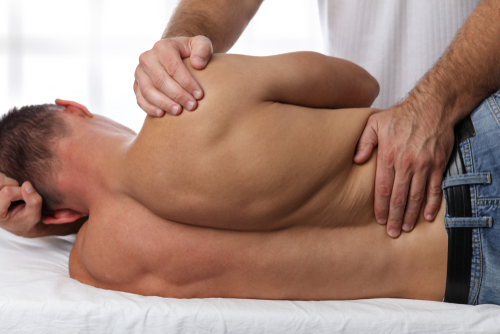
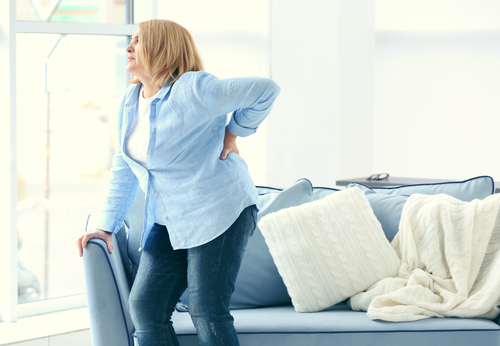
Where pain has been present for longer periods of time, changes occur within the nervous system, as well as in our movements, postures and behaviour. These changes may have been beneficial in the acute phase of pain to reduce stress on painful areas and allow healing to take place. In the medium to long term; however, they can have a negative impact upon recovery. Changes in the nervous system can increase and prolong pain experiences long after initial injuries have healed, and changes in movement, postures, and behaviour can increase stress on the structures of the spine and further increase irritability of nerves and tissues in the lower back. These changes in the nervous system, as well as changes to movement and postures all play a major role in maintaining long-term back pain.
In cases of persistent back pain, tissue healing has already occurred, so other factors become more important.
Understanding pain is often the first step in controlling and overcoming long-term/ persistent lower back pain. Your osteopath will work with you to develop a real understanding of how the pain developed, why it has persisted, and most importantly when to gently push through barriers and get things moving, and when to back off and give your body rest that it needs.
One of the key factors of people with persistent pain is that they move more slowly, with more tension, and less variety of movement than their pain free counterparts. In order to restore normal movement and reduce pain we need to work at a few different factors.
Hands on manula therapy is not as big a focus wtih long term pain as it may be with other type of pain and injury. However, it can still play an important role in reducing pain and aiding recovery. Hands on techniques can be used to reduced tension and pain sensitiry in key areas, imporve ranges of motion and increase circulation and overall tissues health.
Positive movement experiences and rediscovering confidence in your bodies ability to move are often the most important, and final step in recovering from, or effectively managing, long-term pain conditions. How this is done is highly individualised and different for each patient. It usually involves exercises and key movements combined with relaxation and breathing techniques. These are used to provide experiences of relaxed pain free movements that your nervous system can learn and adapt from, and which you can gain confidence and a sense of control from.
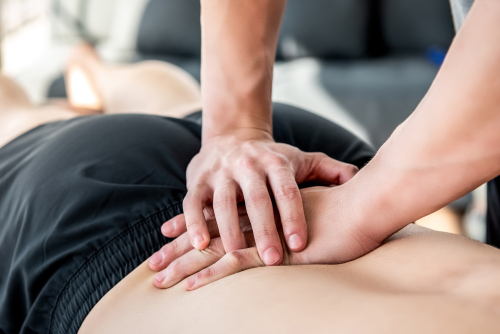
We offer specialist treatment for back pain at our clinic in Holland Park, easily accessible from Notting Hill, Shepherd’s Bush, Ladbroke Grove and surrounding areas.
Booking is quick and simple using the booking system below. For very short notice appointments, you can also try us on 07958070680.
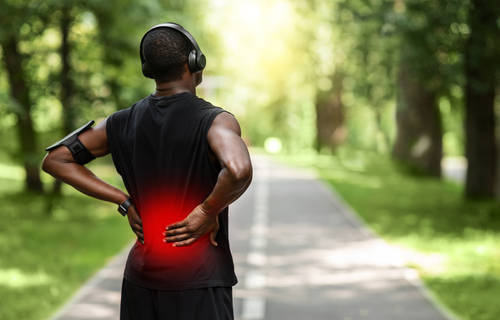
If you have suffered with lower back pain in the past (acute or chronic) then it is not unusual to experience pain flair ups. These can be a reoccurrence of a previous pain, or an exacerbation of an ongoing pain problem. Pain flair ups share a mixture of the features of chronic and acute pain.
N.B The term pain flair up is also used in cases of autoimume conditions such as MS and / or inflammatory arthritis’s. This is a different process to what is described here, which is a flair up of “mechanical lower back pain”.
Pain flair ups can be extremely painful, distressing, and sometimes debilitating. Despite the potential severity of these episodes, they are not due to re-injury or tissue damage. They are closely linked to a number of interacting factors such as increases in stress, reduced sleep, under or over exercise, feeling run down, or when your immune system is stressed fighting off infections; and they can also be triggered by unfamiliar or increased movement or activities.
As these episode do not involve damage they are best thought of as an early / over active alarm system; where pain, muscle spasm, and sometimes inflammation, occur without damage to any tissues or structures. Gradually and gently finding ways to release muscle tension and improve movement will return things to normal.
Understanding the pain process and factors in your life and or activities that have lead to it is an important part of effective treatment of pain flair ups. Your osteopath will work with you to develop an in-depth understanding of what has happened and how it can be controlled effectively.
Hands on therapy and / or acupuncture can be used to reduce pain sensitivity and restore ranges of motion. From here, exercises are used to regain range, variability, and confidence in your bodies movements. Most importantly your Osteopath will help you to learn how and when to do this for yourself incase of future pain flair ups. Understanding pain flair ups and having an effective strategy that works for you means that even if pain flair ups re-occur they will be less painful, less scary, less frequent, and shorter lived putting you back in control
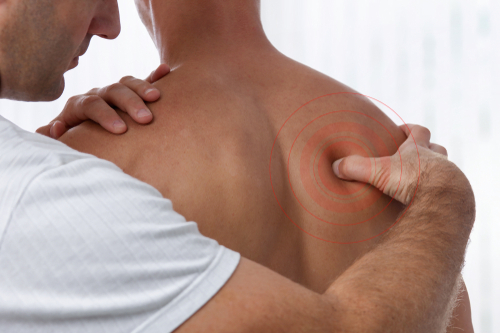

Everybody’s journey into pain is different therefore we all need a different approach. At Holland Park Osteopathic Practice we perform an in-depth case history and examination process to help both you and your practitioner come to a full understanding of your pain, how it started, why it persisted, how it is impacting your life; and most importantly how to get out of it, and what you want to get back to doing.
Treatment is delivered through a variety of methods including hands on manual therapy, acupuncture, and exercise. These techniques can be used to reduce muscle tension, improve range and ease of movement, and reduce pain sensitivity of local structure and the central nervous system as a whole.
As well as the physical hands on therapy and exercise work we can guide you on general lifestyle factors that can have a large impact in recovery from pain, and maintenance of healthy back, and work with you to help you better understand your body and pain responses. This way you can learn how to best care for yourself to keep yourself healthy and pain free.
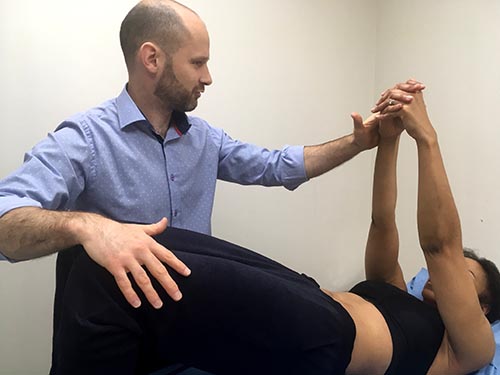
Gavin Smith MSc is an experienced Osteopath, Clinical Director of the Holland Park Osteopathic Practice, and lecturer and Clinical Supervisor at the London School of Osteopathy. He has worked with some of the UK’s top martial artists and sprinters, and also has an extensive background as a sports therapist and exercise coach.
Booking is quick and simple using the booking system below. For very short notice appointments, you can also try us on 07958070680.

Web design by Market Your Clinic Online